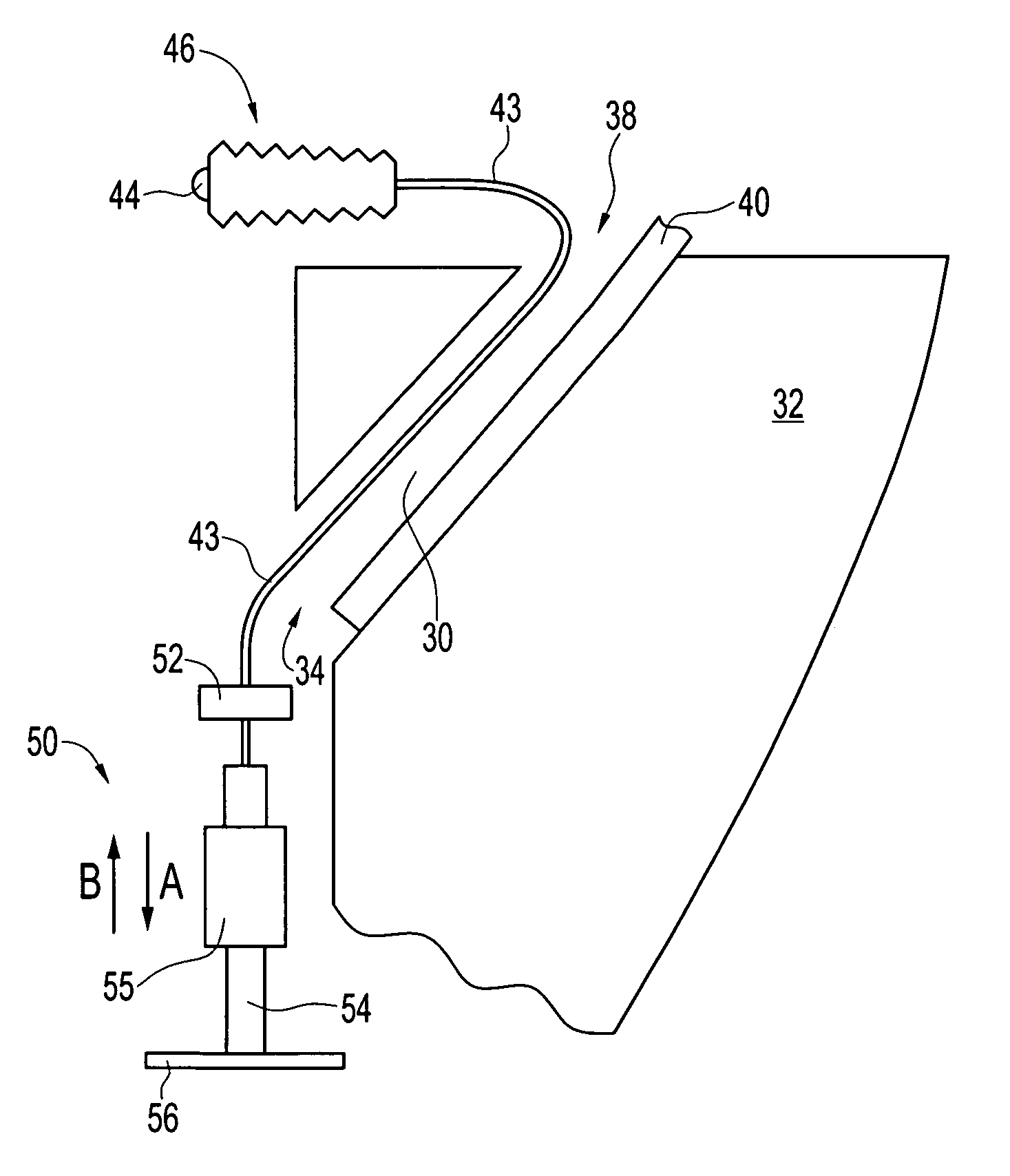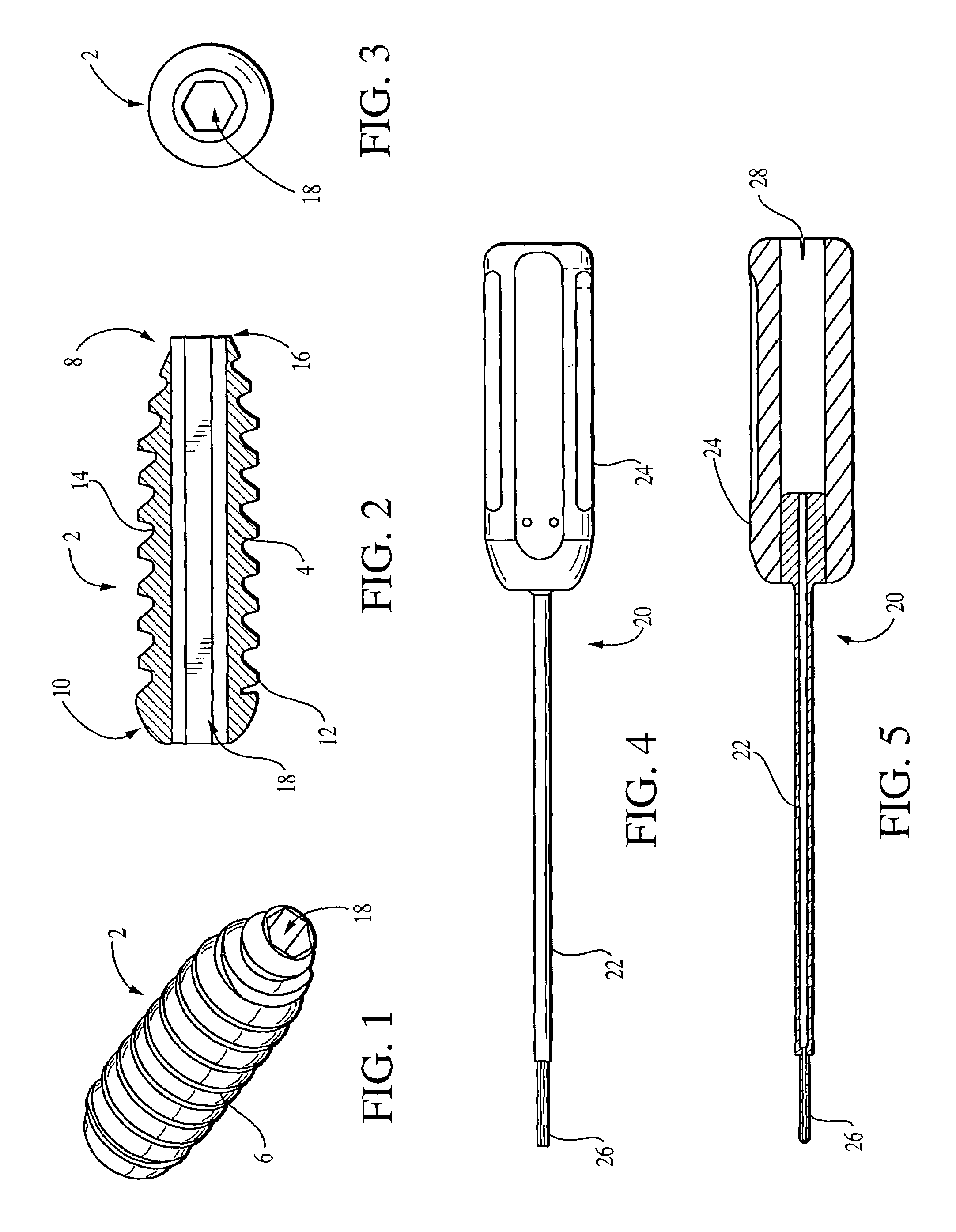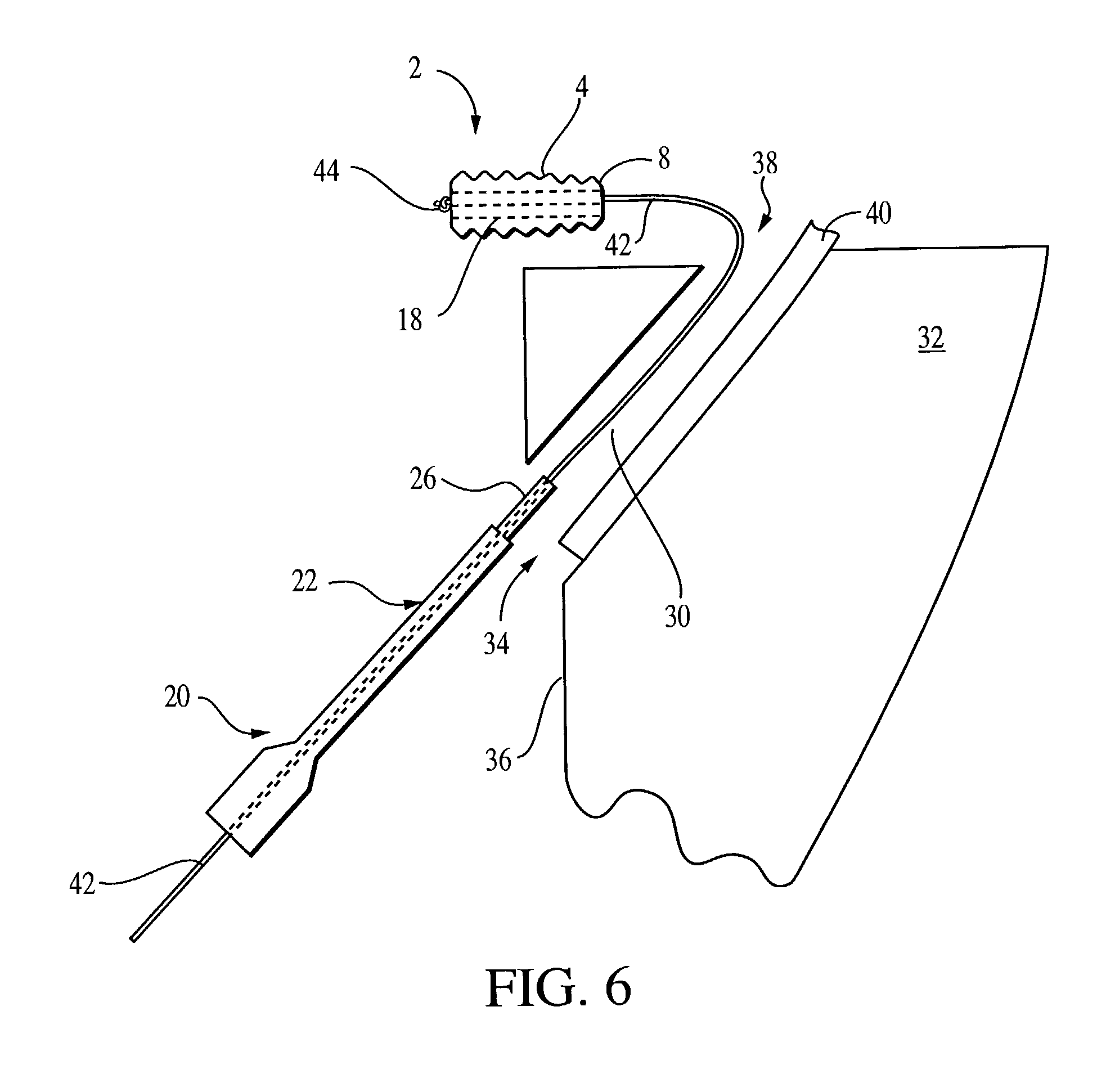Biointerference screw fixation technique
a technology of interfering screw and fixation technique, which is applied in the field of interfering screw fixation of replacement ligament grafts, can solve the problems of shortening the life of acl repair, ligament grafts are secured only at the bottom of tibial tunnel,
- Summary
- Abstract
- Description
- Claims
- Application Information
AI Technical Summary
Benefits of technology
Problems solved by technology
Method used
Image
Examples
Embodiment Construction
[0024]Referring initially to FIGS. 1–3, a bioabsorbable interference screw 2 for tenodesis of an anterior cruciate ligament graft is shown. Body 4 of the screw 2 features a continuous thread 6 provided substantially along the length of the body from a blunt front end 8 to a rounded back end 10. The thread preferably has flattened crests 12 and flattened troughs 14 to obviate ligament graft damage by the screw threads and enhance graft fixation.
[0025]The cannulated body 4 tapers toward the front end 8 to terminate in a blunt tip 16. The taper eases entry of the screw into the tibial tunnel according to the preferred method of ligament graft fixation described further below. The blunt tip 16 of the screw prevents damage of the ligment graft during insertion of the screw. The rounded back end 10 of the screw minimizes abrasion and wear of the installed ligament graft. Cannula 18 formed through screw body 4 has a hexagonal shape for engaging a driver described below. Preferably, cannula...
PUM
 Login to View More
Login to View More Abstract
Description
Claims
Application Information
 Login to View More
Login to View More - R&D
- Intellectual Property
- Life Sciences
- Materials
- Tech Scout
- Unparalleled Data Quality
- Higher Quality Content
- 60% Fewer Hallucinations
Browse by: Latest US Patents, China's latest patents, Technical Efficacy Thesaurus, Application Domain, Technology Topic, Popular Technical Reports.
© 2025 PatSnap. All rights reserved.Legal|Privacy policy|Modern Slavery Act Transparency Statement|Sitemap|About US| Contact US: help@patsnap.com



